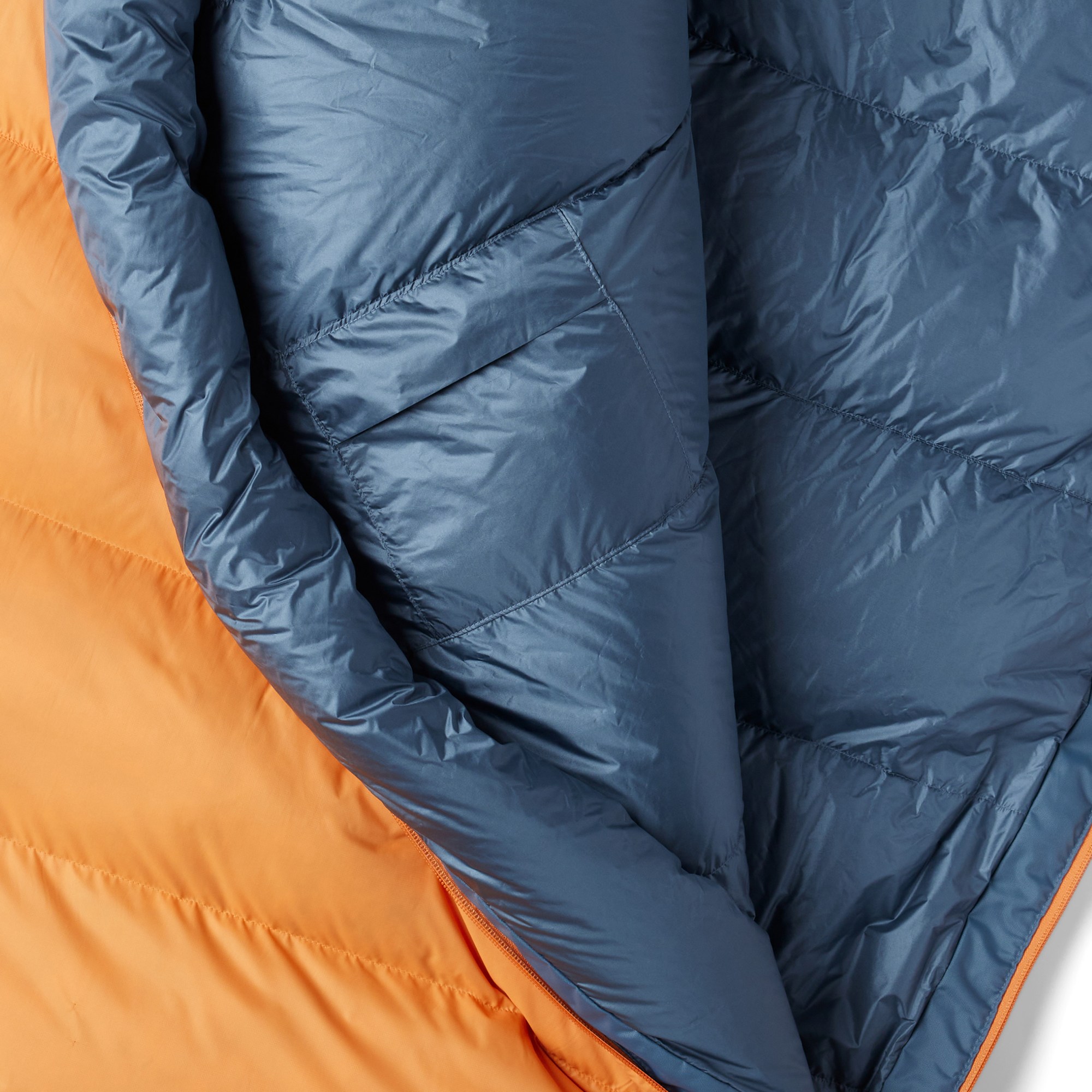<script type="text/javascript" src="http://classic.avantlink.com/affiliate_app_confirm.php?mode=js&authResponse=c4e13e1b9b5acdedad16d533a16f7bf0c234d607"></script>
<script type="text/javascript" src="http://classic.avantlink.com/affiliate_app_confirm.php?mode=js&authResponse=c4e13e1b9b5acdedad16d533a16f7bf0c234d607"></script>

Choosing between a down vs. synthetic sleeping bag is a major decision for campers and backpackers. Each type has unique benefits in terms of warmth, weight, durability, and price, making it important to select the right option for your needs.
In this guide, we’ll compare down and synthetic sleeping bags, breaking down their pros, cons, and best use cases to help you decide. If you’re still looking for the perfect sleeping bag, check out our Best Sleeping Bags of 2025 for expert recommendations. And don’t forget, pairing your bag with the right Sleeping Pad ensures maximum warmth and comfort on the trail.
🔹 Best for: If you want a lightweight and ultra-warm sleeping bag, down insulation is superior.
🔹 Best for: If you expect rainy or humid conditions, a synthetic sleeping bag is the better choice.
🔹 Best for: If you want a long-term investment, down bags are more durable than synthetic.
🔹 Best for: Backpackers and thru-hikers should choose down for easier packing.
🔹 Best for: Budget-conscious hikers should choose synthetic bags for affordability.
| Feature | Down Sleeping Bags | Synthetic Sleeping Bags |
|---|---|---|
| Warmth-to-Weight Ratio | ✅ Excellent | ❌ Bulkier for same warmth |
| Wet Conditions Performance | ❌ Loses insulation when wet | ✅ Retains warmth when wet |
| Durability | ✅ Lasts decades | ❌ Wears out faster |
| Compression & Packability | ✅ Highly compressible | ❌ Bulkier |
| Price | ❌ Expensive | ✅ More affordable |
| Best Use Case | ❄️ Cold & dry conditions | 🌧️ Wet & humid conditions |
🚫 Assuming all down bags are waterproof.
✅ Solution: If you need down, choose a water-resistant down treatment or pack it in a dry sack.
🚫 Picking a sleeping bag without considering weather conditions.
✅ Solution: Choose down for cold/dry weather and synthetic for wet/humid conditions.
🚫 Ignoring weight and packability for backpacking trips.
✅ Solution: If you’re a backpacker, prioritize a compressible down bag.
❓ Is down or synthetic better for backpacking?
👉 Down sleeping bags are better for backpackers because they’re lighter and compress smaller.
❓ Do synthetic sleeping bags last as long as down bags?
👉 No, synthetic bags break down faster, while down bags can last decades if properly maintained.
❓ Can you use a down sleeping bag in wet conditions?
👉 Only if it has a water-resistant treatment—otherwise, synthetic is the better choice.
Choosing between down vs. synthetic sleeping bags depends on your hiking style, climate, and budget. If you need lightweight warmth, down is the best option. If you need affordability and water resistance, synthetic is the way to go.
Looking for the best sleeping bags? Check out our Best Sleeping Bags of 2025 for expert recommendations. And don’t forget to pair your sleeping bag with the right Sleeping Pad for maximum warmth and comfort!